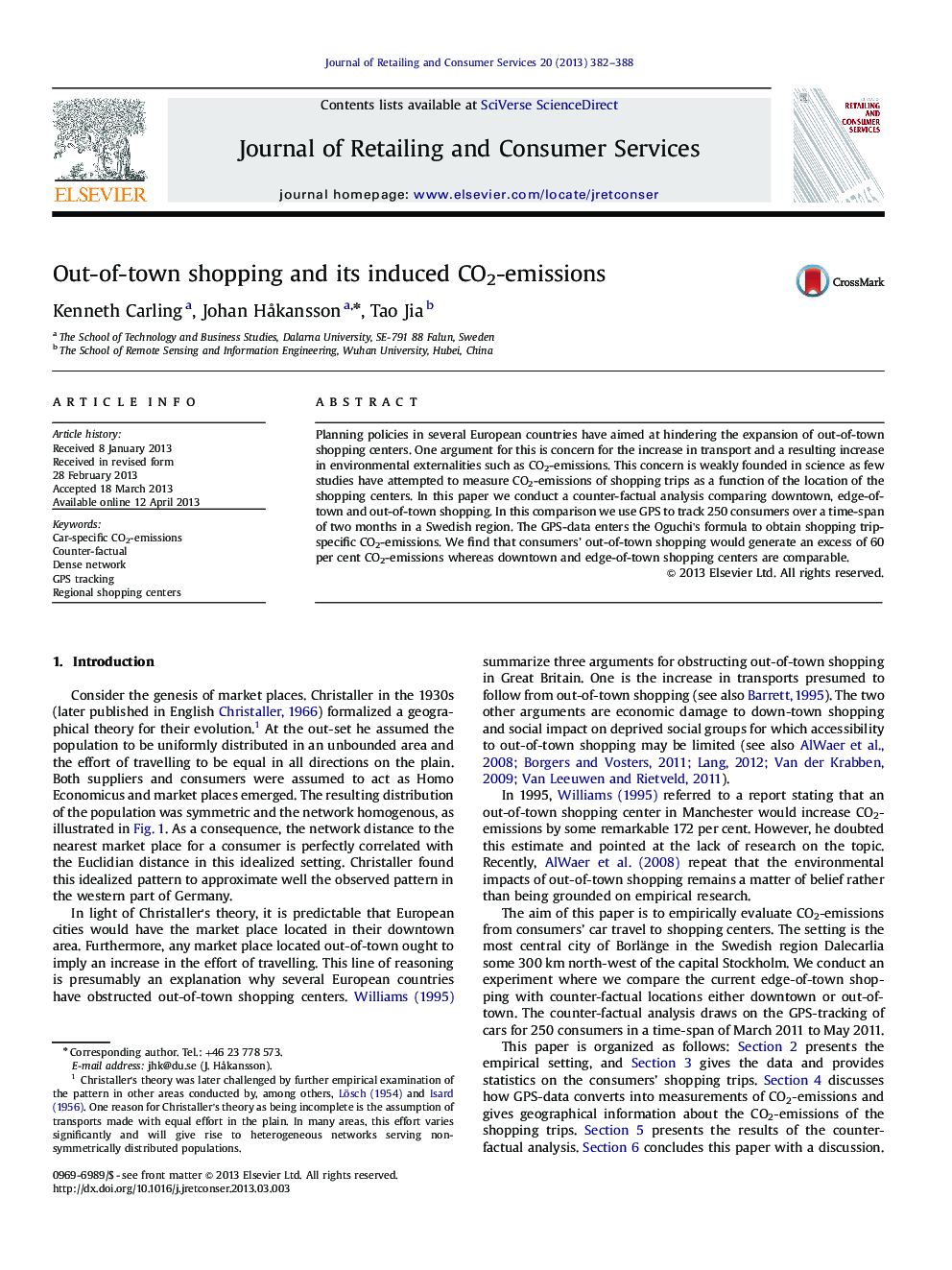| Article ID | Journal | Published Year | Pages | File Type |
|---|---|---|---|---|
| 1029140 | Journal of Retailing and Consumer Services | 2013 | 7 Pages |
•We evaluate CO2-emissions from consumers’ car travel to shopping centers.•We compare downtown, with edge-of-town and out-of-town shopping.•We use GPS to track 250 consumers over a time-span of two months in a Swedish region.•We find that out-of-town shopping generate an excess of 60 per cent CO2-emissions.
Planning policies in several European countries have aimed at hindering the expansion of out-of-town shopping centers. One argument for this is concern for the increase in transport and a resulting increase in environmental externalities such as CO2-emissions. This concern is weakly founded in science as few studies have attempted to measure CO2-emissions of shopping trips as a function of the location of the shopping centers. In this paper we conduct a counter-factual analysis comparing downtown, edge-of-town and out-of-town shopping. In this comparison we use GPS to track 250 consumers over a time-span of two months in a Swedish region. The GPS-data enters the Oguchi's formula to obtain shopping trip-specific CO2-emissions. We find that consumers’ out-of-town shopping would generate an excess of 60 per cent CO2-emissions whereas downtown and edge-of-town shopping centers are comparable.
